Having completed my second Japan Winter Wildlife tour for 2016, today we’re going to start a new travelogue series to walk through a selection of images from this second tour.
Last week, I walked you through my selection process, trying to whittle down the images from this tour to as few as possible. The fewer images you present from any trip or shoot, generally the better they will be. Whether just showing your friends or in a professional environment, I feel it’s really important to show fewer quality images than lots of images, just because you have them.
From my Japan wildlife tours this year though, I have a bumper crop of images that I have had real problems reducing down to less than 172 from Tour #1 and a whopping 246 now from Tour #2. This is a nice problem to have, because I do feel that what’s left is at least by my standards, relatively good work. I have also of course been through and selected a subset from these images that represents the best work from each tour, although that number is still pretty high as well.
For these series of travelogue style podcasts, I have selected 40 images from each tour. I would have liked to have done less, but that’s the best I could do, so I hope you’ll enjoy walking through these images in batches of ten, over these next four episodes.
I started Tour #2 this year with hopes that we’d have more snow. The el niño weather patterns that have caused many countries to see unusual weather this winter, have caused many areas of Japan that usually have a lot of snow, to have very little.
The weather fronts that come down from Siberia did us proud for my Hokkaido Winter Landscape Photography Adventure tour in January, but much of that snow falls by the time it hits the main mountain range in central Hokkaido, so the Eastern Hokkaido where all of the wildlife is was pretty sparse in places.
The biggest surprise though, came as we drove over to Nagano, about three and a half hours north-west of Tokyo, to photograph the Snow Monkeys for the first three days of the tour. Whereas we usually enter the Winter Wonderland after driving through a number of tunnels under mountains, on Tour #2 this year there was hardly anything.
We walked along the mountain track into the Monkey Park with soil underfoot, not snow. It made the walk easier, and it was still great to be outdoors walking through the beautiful woods, but very different to what we usually see.
Inside the Monkey Park, there were just a few patches of dirty snow, that weren’t enough to make a nice white backdrop for these adorable animals, so we decided pretty much straight away, that this visit was going to be more about capturing facial expressions and mannerisms. I do this a lot anyway, but I ensured the participants were all thinking of this as we started our shoot.
Although I think we all enjoyed our time with the monkeys, by the end of my selection process, it turns out that there were no images from the first two days included. All images that we’ll look at today were from the third day, when we travel into the park just for the morning, before making our way back to Tokyo.
In this first image (right) you can see what made the difference—it had snowed.
Although the background was still patchy, we had a little bit better snow coverage on the walls of the valley, and the monkeys look so much better with snow in their fur. They are Snow Monkeys after all.
In this image, I liked the way the monkey seems to be looking up at the snow. This is quite appropriate really, as there has been so little snow this year, it could even have seemed a little unique to the monkeys themselves.
As I’ve mentioned in previous episodes, I shot both of these wildlife tours exclusively with two 50 megapixel Canon EOS 5DS R cameras, and they performed incredibly well.
My settings for this shot were 1/320 of a second shutter speed, with an aperture of f/8, ISO 1250, at 400mm. With the monkey just sitting there, I could have gotten away with a slower shutter speed, and indeed was shooting these monkeys slower at times, but there is sometimes action around the pool where this monkey was, and a slightly faster shutter speed will help me to capture that. Also, with the long focal length of 400mm, especially with the high resolution of the 5Ds camera, I am trying to get close to my focal length as the shutter speed. I could have gone to 1/400 at ISO 1600, but the settings I did select were a good compromise.
The snow also forced larger groups of monkeys to congregate in the pool, which gave us the opportunity to also capture situations like this one, where it looks like the baby monkey is holding the mother’s nose, almost causing her to hold her breath, which I thought was quite comical (below).
Here you can see better how few patches of snow there were on the valley wall, although in this situation, that really helps us to see the falling snow much better. As I’ve mentioned over the last few episodes, it really felt as though we lost a fair amount due to the weather conditions, but we were certainly presented with many if not more alternative opportunities, which is one reason why I feel these trips turned out to still be very productive for us.
My settings for this image were 1/320 of a second shutter speed, at f/8, and this time I had increased the ISO to 1600, and again shot at 400mm. I was using my Canon EF 100-400mm f/4.5-5.6L IS II lens for the entire time with the monkeys. This was the only lens I took into the Monkey Park with me in fact.
I sometimes also take in a 24-70mm so that I can go wide occasionally, but with the conditions as they were, I didn’t think it necessary during this trip. The 100-400mm lens on a full frame sensor though, enables me to pull back enough for a relatively wide scene, and gets me in close enough when necessary as well, so it really is the best lens for the monkeys.
I thought this next image was quite comical as well, with the one monkey seeming to punch the air in victory (below). I enjoyed just watching for this type of moment.
You might think that this would look better if we could see the monkeys face, but the reality of this shot is that the monkey had their arm up to be groomed, and almost definitely had their eyes closed in a very relaxed pose. It only looks like punching the air in a still image. My settings for this image were the same as the previous photo.
I continued to look out for interesting expressions, and the last shot I want to share with you from this third day with the Snow Monkeys is this one, were I caught a new baby with his older brother, both in a relatively comical pose, looking either puzzled, or worried, or both (below).
I have a whole range of images of this pair, but this is my favorite as the older monkey also put his hand to his mouth, looking all concerned, and this is one of the only images where they were both looking directly at me. My settings for this image were 1/320 of a second again, now at f/9 to give me a slightly deeper depth of field, and ISO 800, as it had brightened up just a little bit. My focal length for this was 340mm.
After this, we walked back down the mountain trail, this time with a smattering of snow to give us a slightly differently view of the place, and made our way to lunch, then back to Tokyo where we’d spend the night, before getting an early flight the next morning, to Hokkaido.
We spend the first two days in Hokkaido in the Kushiro area, starting with a visit to the Akan International Crane Center to photograph the Japanese Red-Crowned Cranes. I have lots of shots from the Crane Center on the first day, but the first image that made my selection to talk about here is of this Black-Eared Kite, which soared overhead shortly after 1pm, as they started to gather, waiting for the fish that would be thrown for the cranes out at 2pm.
These Kites are a common bird here in Japan, even considered a pest in some areas because they are in such large numbers, but I think they are an absolutely beautiful bird. This is cropped down slightly to a 38 megapixel image, but otherwise, all I’ve done to this is added a little bit of Clarity in Lightroom, to give it just a little bit more punch. The great thing about this location is that the light bounces off the snow on the ground to illuminate the underside of the birds as they fly overhead, really giving us a good look at the detail in these beautiful creatures.
My settings for this were 1/1000 of a second at f/10, ISO 500 at 560mm. While at the cranes, although I had my 100-400mm lens on a second 5Ds R body slung over my shoulder with a Black Rapid RS-Sport strap, I also extensively used my Canon EF 200-400mm f/4L lens, with the internal 1.4X Extender engaged. This takes me out to 560mm.
If you are wondering why I wouldn’t just use a 1.4X Extender on the 100-400mm lens, it’s because you can only focus with the center focus point when using the 1.4X Extender on the 100-400mm lens, because it’s aperture drops to f/8 as you zoom the lens. With the 200-400mm lens, it’s f/4 throughout it’s range, so the aperture remains at f/5.6, and you maintain full autofocus capabilities at f/5.6.
We had a great session with the White-Tailed Eagles and Kites as the fish were thrown out for the cranes, and then promptly stolen by the raptors, but the photos I got don’t really beat anything that I have already shown, so I’ll skip them, and move on to our sunset shoot. If the conditions look good for us to get a bit of color in the sky, I take the group to a farm where the owner allows us onto his land to photograph the cranes as they fly in front of the sunset. It wasn’t as dramatic as it can be, but I kind of like this shot, of three cranes flying over the colored clouds as the sun fell close to the horizon (below).
This probably isn’t one of my best shots, but I thought it would help to document our trip. I was also very grateful to the farmer on this tour. I usually take him a box of goodies as a thank you, but on this tour, because the usual location that he allows us on to was like a skating rink, he opened up a small area directly behind his house, which I thought was incredibly kind of him.
With the light changing so quickly as you pan across the sky, this is one of the few locations where I use Aperture Priority instead of Manual for my exposure. I set the camera to f/10, because I want multiple cranes in a group to all be pretty sharp, and then set my camera to not go below 1/500 of a second shutter speed, and turned on Auto ISO as well. This gave me a shutter speed of 1/640 of a second at f/10, with ISO 640. The focal length was 200mm, so you can tell these guys were relatively close as they flew over the farmer’s fields.
The following morning we visited the Otowa Bridge, literally the “Sound of Wings” bridge, in the hope of getting some mist over the river and hoar frost on the trees, and we weren’t disappointed. It was well below -20°C (-4°F) so it was cold enough for the hoar frost, but actually maybe a little too cold, because the mist was too dense to get really good shots for most of the couple of ours that we spent there.
Here is my favorite shot from this first session (below). We were waiting for the mist to clear, and at times it was a little frustrating when we could here the cranes calling, but the mist was so thick that we couldn’t really shoot it with any success. Then, occasionally, we’d get a little bit of action as the mist was thin enough to shoot, as it was here.
I caught the one crane jumping up with good separation all around him. I do like how the cranes are all faint as they grow more distant in the mist, and the trees with the hoar frost are beautiful, so I’m happy with this shot. My settings were 1/500 of a second at f/10, ISO 800, at 560mm.
This next image from later in the day at the Crane Center, is one of just a handful of images from this year where you can actually see the snow on the ground (below). Until just a few days before we arrived at the Akan International Crane Center, I’d been checking photos from there, seeing that there were huge patches of dirt showing through. Much of the snow that we’d had on Tour #1 had melted, and the ground had looked absolutely terrible.
Fortunately, we had some snow at the cranes while we were at the Snow Monkeys, and the ground was now almost totally covered with snow, but it was really quite lumpy and contrasty. I hope you can’t tell in this photograph, but I have actually used a Gradient Filter in Lightroom just across the snow, and reduced the Dehaze slider to -20, the Clarity slider to -70 and the sharpness to -100. This has really helped to soften the appearance of the snow, making the image almost useable. Without that, I just felt the snow was a little bit too much of an eyesore.
I really like this pose though, so I thought it was worth making the change to salvage something. The cranes often kick their feet up like this as they dance together. This isn’t aggression, it’s courtship. This is cropped down slightly, but I still have a 44 megapixel photo, which is a great amount of detail. My settings were 1/1000 of a second at f/10, ISO 320 at 560mm.
Again though, while the ground made it hard to get great shots at eye level, the skies were beautiful, and being one of the few locations where I actually find blue skies in my images, it is always a treat when we are able to shoot something like this photograph, of twelve Whooper Swans flying across this beautiful sky (below).
I used my 100-400mm lens for this, as these swans flew around to our left, and I was conscious of where the birds were over the background for maximum effect. I also like the grouping here, with four at the right, four in the middle, and then four more, a little broken up, but almost together on the left side of the frame. I shot this also at 1/1000 of a second, f/10, ISO 250, at 153mm.
This next image is our last shot for today, taking us to the end of day five on this tour. As much as I like the texture in the clouds in the previous image, I still love this shot, with six Red-Crowned Cranes against a totally pure blue sky (below).
I have done absolutely nothing to this image. It’s totally straight out of the camera, without even any Clarity added, as I don’t think it even needs that. And it’s not cropped either, so I could print this at 24×36 inches at almost native resolution, and see the clear catch-light in each of these crane’s eyes.
We’ll wrap it up there for today, and pick up the trail with a second morning at the Otowa Bridge in the next episode. Did we get the hoar frost again or was it a little too misty? Tune in to part #2 to find out.
2018 Winter Wonderland Tours
Before we finish, I’d like to remind you that we are now taking bookings for the 2018 Snow Monkeys & Hokkaido Tours. For details and to book your place, visit the tour page at https://mbp.ac/ww2018. Our 2017 tours are already sold out, but if you’d like to be put on the wait list, please contact us.
Show Notes
Details of the 2018 Tours: https://mbp.ac/ww2018
Subscribe in iTunes for Enhanced Podcasts delivered automatically to your computer.
Download this Podcast in MP3 format (Audio Only).
Download this Podcast in Enhanced Podcast M4A format. This requires Apple iTunes or Quicktime to view/listen.


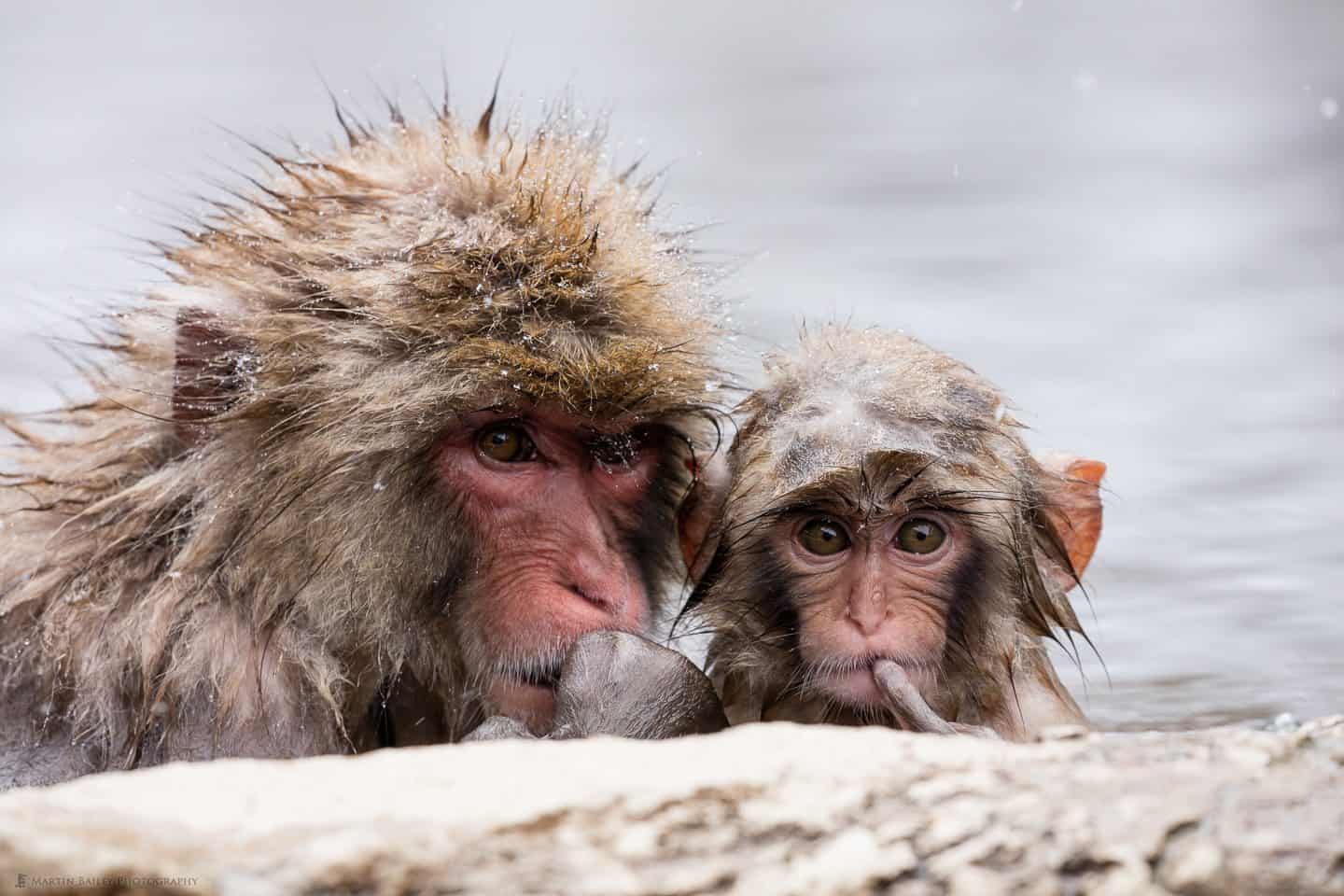
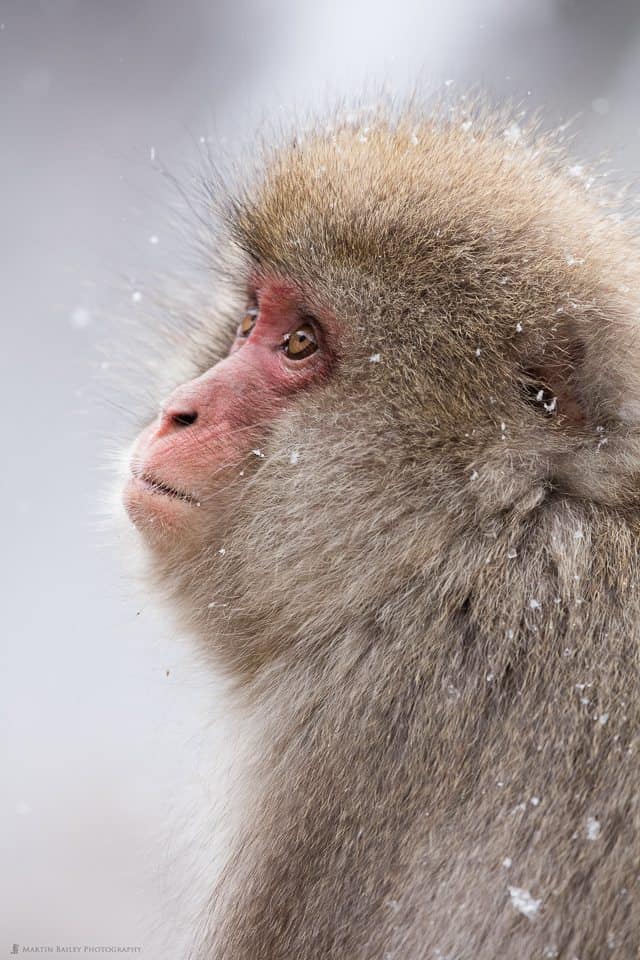
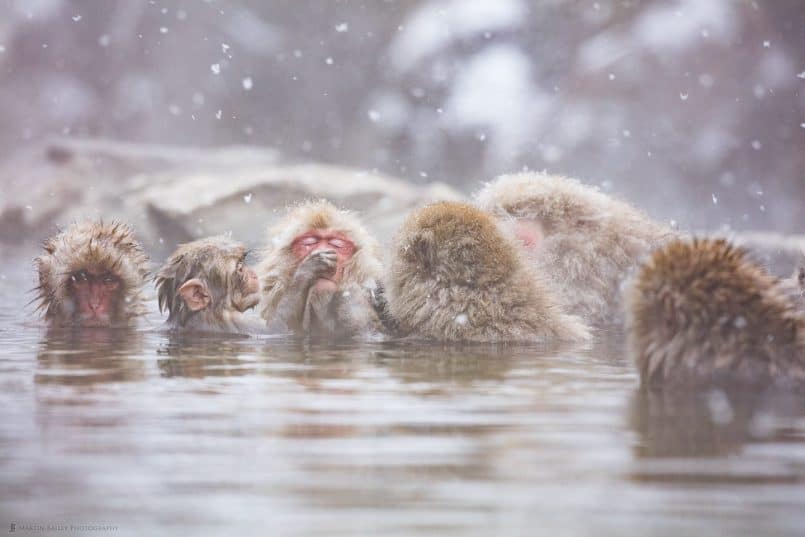
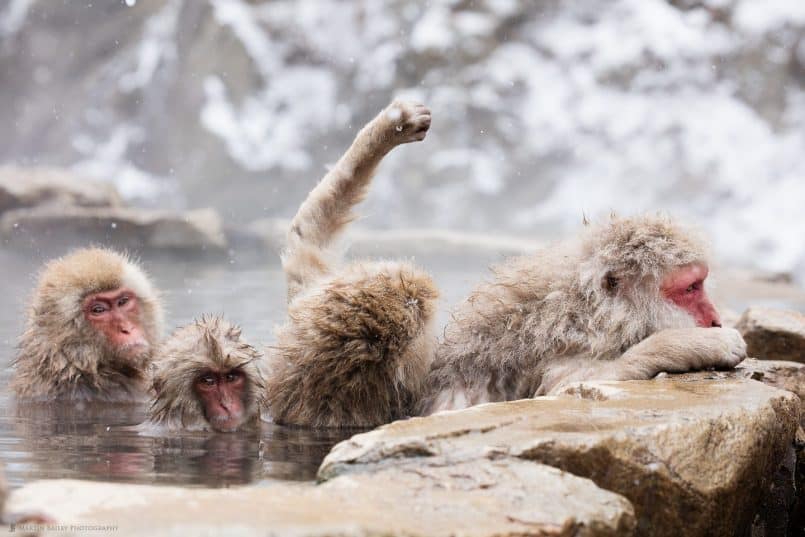
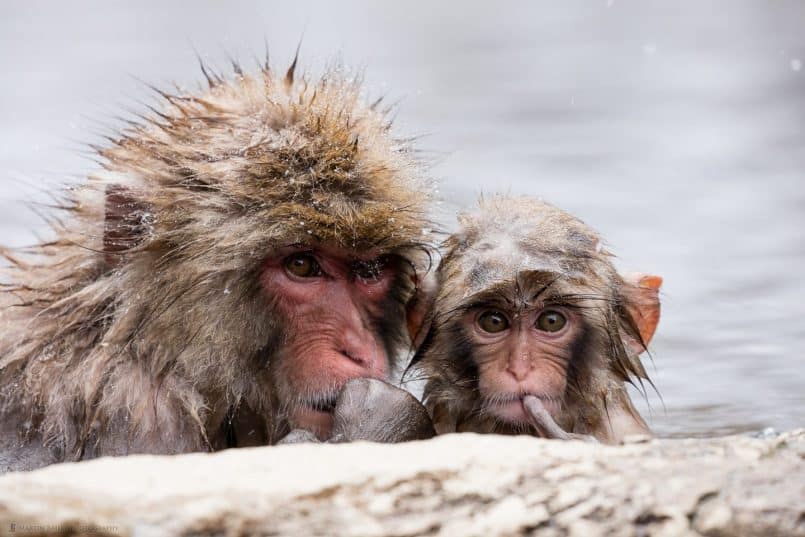
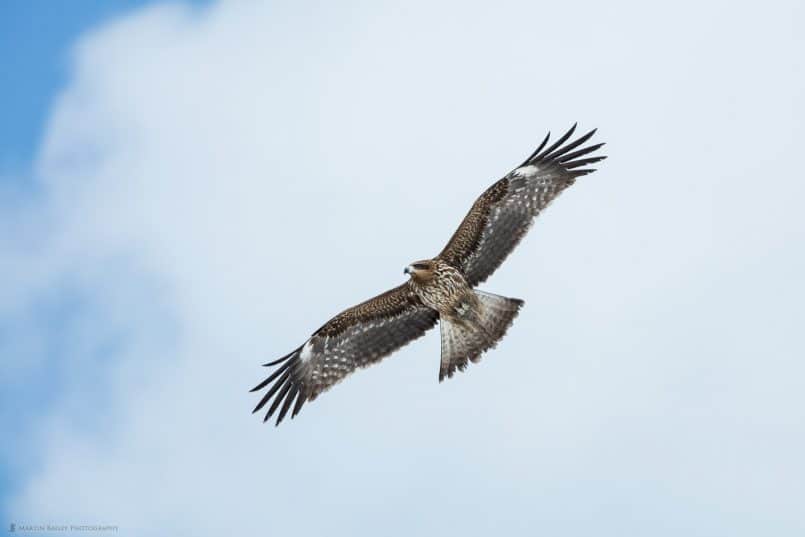

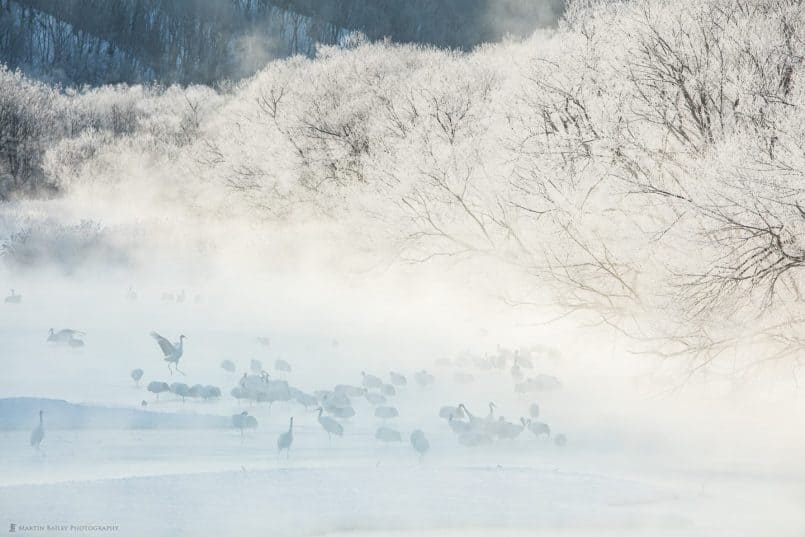

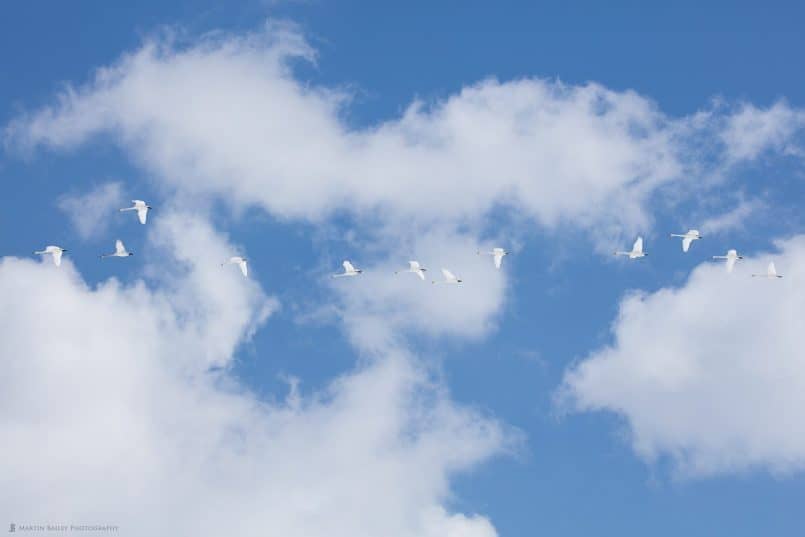
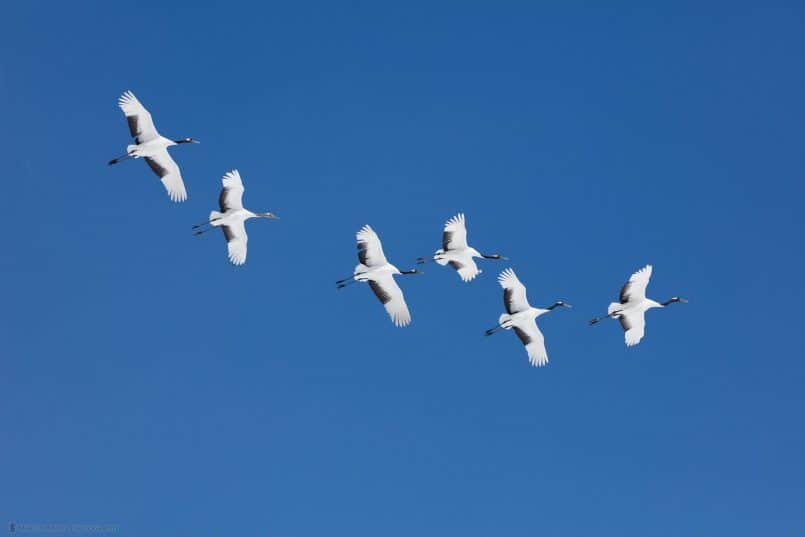
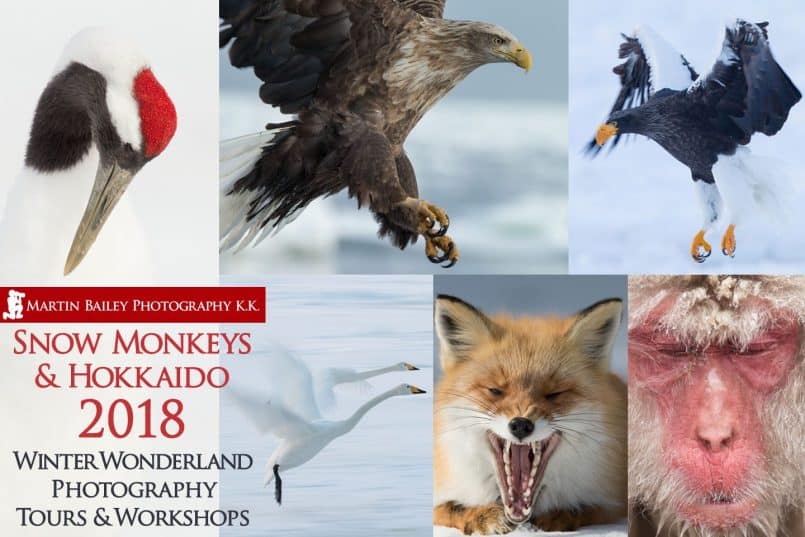

Wonderful images Martin – particularly the Cranes in the mist and hoar frost!
Thanks Mark! I’m really pleased you like that crane shot too. That location is amazing when it works out. Thanks for taking the time to comment too!